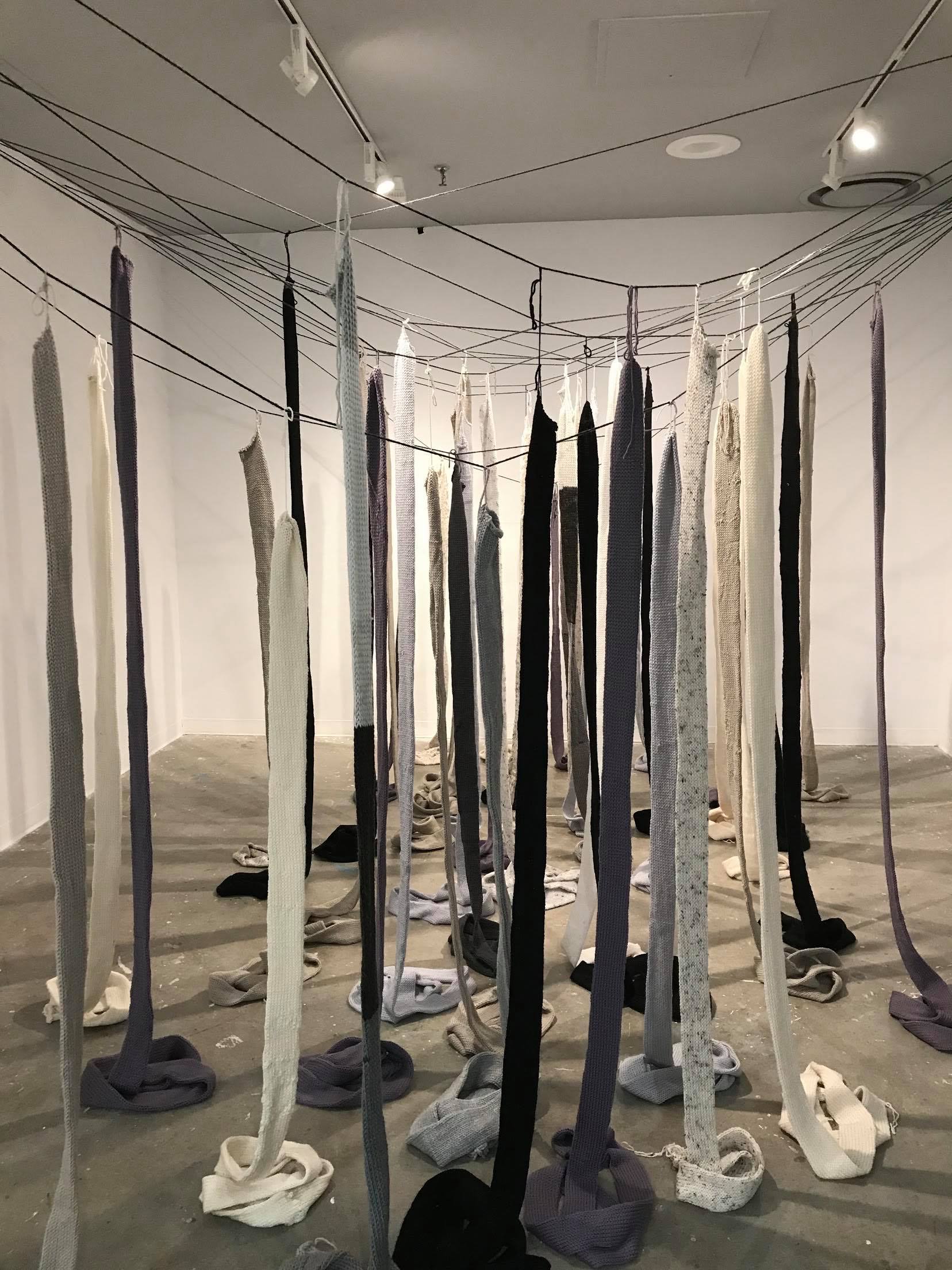Miriam El Abbassi | Arts Editor
Featured Image: Each line of knitted work represents a year in Hilda Gertrude’s life. | Courtesy of Miriam El Abbassi
Grief is an incredibly complex emotion, and something that manifests differently in everyone. It can’t always be expressed plainly with words, which is where the avenue of art comes in. Art, in all of its forms, acts as a conduit for these kinds of difficult emotions, allowing the person experiencing them some means of catharsis.
Lifelines (Hilda), by visual artist Kristen Elizabeth Donoghue-Stanford, is a homage to the life of Hilda Gertrude: “A devoted wife; a kind and caring mother; and a spirited and loving grandmother,” as mentioned in her artist’s statement. Gertrude passed away on January 6th, 2019 at the age of 87.
Donoghue-Stanford then goes on to describe the focus of this exhibit: “In this installation we experience remembrance and loss. We face the concepts of life and death as we witness the lifelines of somebody who is no longer with us through the process of lamenting. It opens the possibility for reflection and the ability to express gratitude towards such a life.”
With this exhibit, Donoghue-Stanford is allowing the audience a rather intimate look into what grief and mourning can look like.
The art within the gallery space presents itself as two distinct segments: 87 knitted pieces and a looping video shot on an old film camera. At one end of the room, many long knitted tubes are hung from the ceiling, and on the other, a loop of collected footage is projected onto a wall, with more knitted loops lying beneath it. The video consists of various clips, from the years of 1950 to the early 2000s, which feature Gertrude and her family.
“Each line of knitted work represents a year in Gertrude’s life. Paths not chosen, opportunities missed, and years and years full of a rich and meaningful existence. Each small section of film, slow and distorted from the age of the tapes collected, showcasing the fragmentation of memories and how they fade over time. Yet they never truly leave,” as described by Donoghue-Stanford.
While Gertrude may have passed away, there are still elements of her that live on, as shown in this exhibit. These different elements then become a part of something new, which now exists within the memories of the audience.
Located in Special Project Gallery at the Joan and Martin Goldfarb Centre for Fine Arts, Lifelines (Hilda) examines the ways in which grief can be exhibited, while also giving space to pay tribute to a life that once was.


